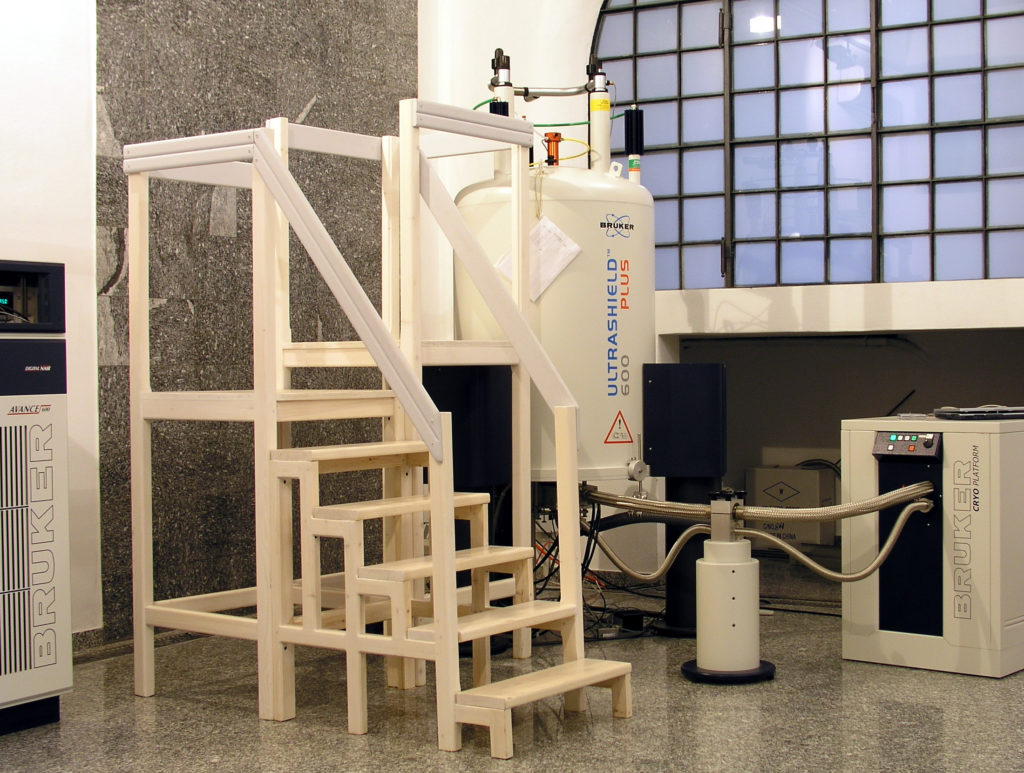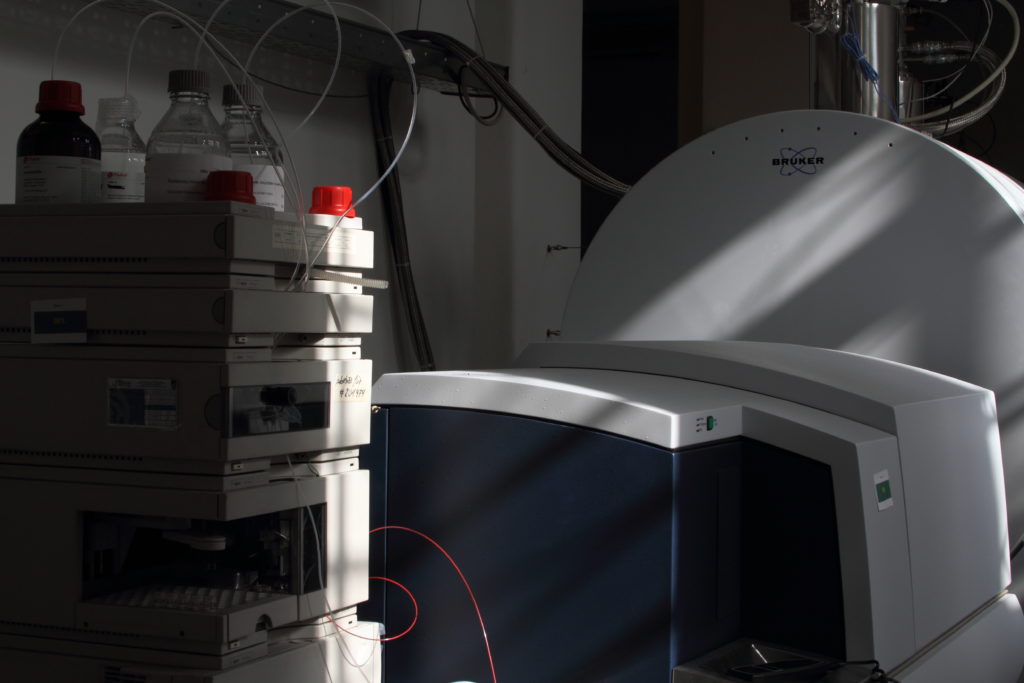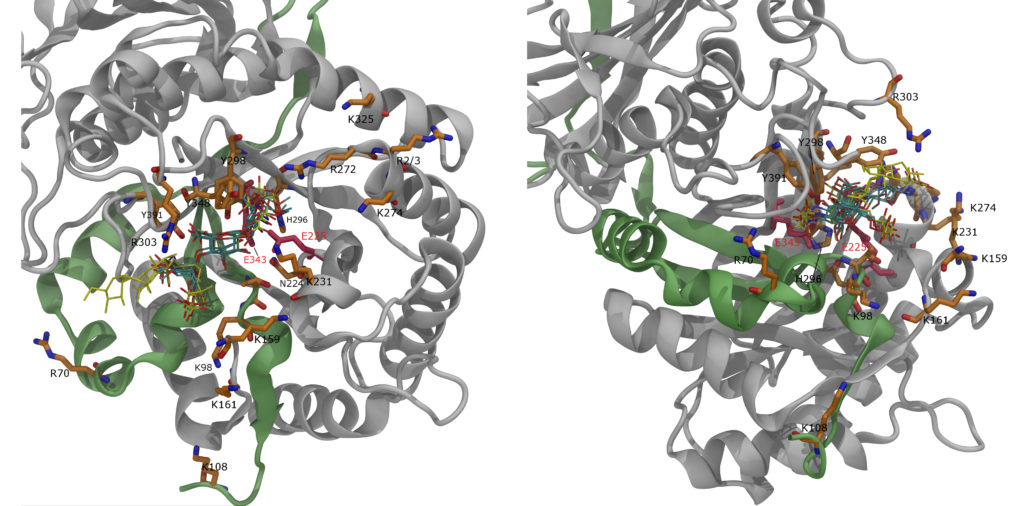The research activities are performed in the building of the G. Ronzoni Foundation. The Institute has about 1,000 sq. meters of laboratory and office space, including chemistry, biochemistry (including a walk-in cold room) and instrumental laboratories, fully equipped with state-of-the-art instrumentation, dedicated to chemical preparations, biochemistry and structural research. Research facilities include the LC-MS, chromatography, physico-chemical laboratories and NMR Centre

- High-resolution 600 MHz Bruker Avance III 600
- Quadruple resonance (H/C/N/2H) High-sensitivity CryoProbe TCI 5mm
- High-resolution 500 MHz Bruker NEOn500
- Quadruple resonance (H/C/N/2H) High-sensitivity CryoProbe TCI 5mm
- Triple resonance probe TXI 5mm
- Inverse detection multinuclear NB probe 5mm with a shielded x-axix gradient BGU gradient unit Z (50 gauss/cm)
- High-resolution 500 MHz Bruker Avance HD
- Inverse detection multinuclear BB probe 10mm
- TXI 5mm probe
- solid state probe – MASSB-DR-BB/1H&19F-3.2mm

- UHR-QqTOF (Ultra-High Resolution Qq-Time-Of-Flight), Impact II Bruker Daltonics, (UHPLC Platin Blue Knauer)
- UHPLC-HRMS ELUTE-IMPACT II Bruker Daltonics (ULTRA-HIGH RESOLUTION LC-QTOF MS).
- Multidetector GPC Sec Systems
- 2 Viscotek units equipped with Triple Detector Array (RI, viscometer and RALLS/MALLS) and related software for absolute Mw determinations.
- Omnisec Multidetector system (Malvern Instruments)
- Viscosimeter: Anton Paar MCR92
- DLS/Z Potential:
- Viscotek 802 DLS Dinamic Lighit Scattering
- Malvern Instr. Zetasizer Nano ZS
- Centrifuge
- UV
- Fluorimeter
- Electrophoresis
- Size-exclusion and ion-exchange chromatography
- Ultrafiltration

- NAMD 12.0, VMD 1.9.3, Ambertools 14.0, Gamess (US), Autodock 4.2, CORCEMA, NOEPROM,
- R, RStudio (R foundation for statistical computing, Vienna)
- Selected MD simulations were run on remote supercomputers at CINECA SCAI (Super Computing Applications and Innovation). The applied supercomputers were Fermi, Marconi, Galileo Clusters www.hpc.cineca.it
- Workstation (E4 Engineering) double CPU (Intel(R) Xeon(R) Gold 6138, 20 core 2.00GHz) Memory (RAM) 96Gb, two HD 1Tb
- Workstation (Dell Precision T7600) double CPU (Xeon 6Core 2.3 GHz), GPU NVIDIA Tesla C2075, total Memory (RAM) 32Gb, two HD 1Tb.
- Workstation (Dell Precision T7500) CPU (Xeon 6Core 2.66 GHz), total Memory (RAM) 24Gb, 1 HD 1Tb.
- Workstation (Acer) CPU (i7 3.4GHz, 8 Core); total memory (RAM) 8Gb, 1HD 1Tb.
- Workstation (Mac mini) CPU (Intel Coreì7 2GHz), total memory (RAM) 8Gb, 2HD 500Gb, Operating System: OS X El Capitan.

